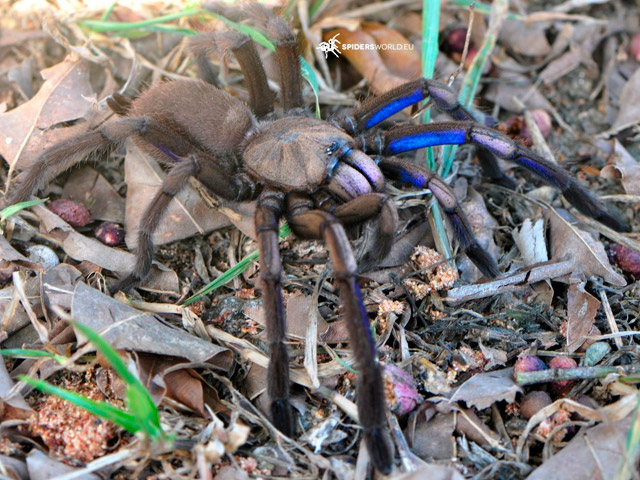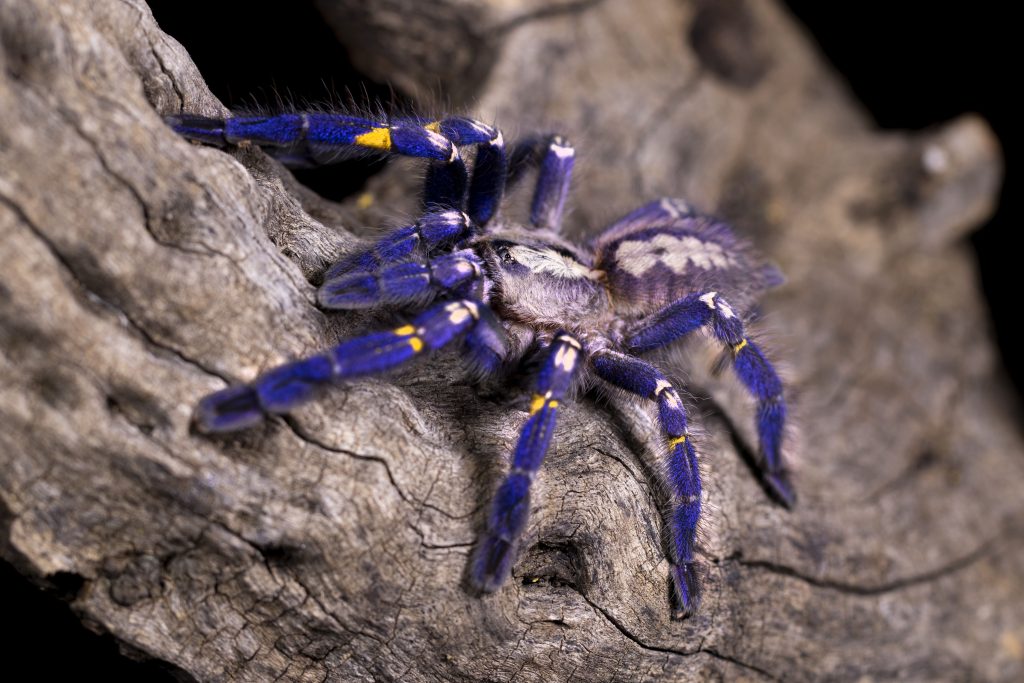The woods of Thailand are home to a new species of electric blue Tarantula. During an expedition to Phang-Nga province in southern Thailand to study the diversity and distribution of tarantulas, a team of Thai researchers came across the massive creepy crawly. JoCho Sippawat, a popular YouTuber, also participated in the mission.
Scientists discovered a spider in a mangrove jungle, naming it Chilobrachys natanicharum. On September 18, the scholarly journal ZooKeys published the study describing the finding.
“(We found) a new species of tarantula that exhibits a mesmerising blue-violet hue, reminiscent of electric blue sparks,” Narin Chomphuphuang, a researcher from Khon Kaen University’s Department of Entomology and Plant Pathology, told CNN.
The research found that the spider was already well-known in the exotic spider trade under the name Electric Blue Tarantula. Several stores say they carry them, with prices reaching into the hundreds.
Narin Chomphuphuang, an arachnologist at Thailand’s Khon Kaen University, and his team discovered a blue spider. “Blue is one of the rarest colours to appear in nature,” the researchers wrote.
He described the difficulty by saying, “For an object to appear blue, it must absorb very small amounts of energy while reflecting high-energy blue light.”
“These tarantulas live in tree hollows, making it difficult to capture one because you have to climb a tree and coax it out of a series of hollows while wearing wet, slippery clothing. We went on this excursion at night and during low tide and only got two of them,” he continued.
Many different kinds of animals, including birds, fish, and insects like butterflies, have blue colouring. Tarantulas’ blue coloration does not originate from pigment but rather from structural colouring. This, according to the ScienceAlert study, occurs when light is reflected off of microscopic structures at such an angle that it shimmers blue and violet.
In contrast to birds and insects, tarantulas show less iridescence and maintain highly conserved reflectance in a specific narrow band of wavelengths, according to the study, making them stand out as a unique example of structural colours that evolved independently at least eight times.
Incredible plasticity is on display in the electric blue tarantula. In evergreen forests, these tarantulas are equally at home in tree hollows and underground homes. However, Chomphuphuang states, “the influence of the tides limits their habitat to reside only inside tree hollows in mangrove forests.”
Taxonomy is an integral part of scientific inquiry, and the broader public needs to be aware of its importance. Everything from answering simple questions like “what kind of spider is that?” on social media to performing critical research to prevent extinction relies on taxonomy.
About the Electric Blue Tarantula
The Electric Blue Tarantula, scientifically known as Chromatopelma cyaneopubescens, is a striking and popular tarantula species among hobbyists due to its vibrant blue coloration. Here are some key characteristics and information about the Electric Blue Tarantula:
- Appearance: Adult Electric Blue Tarantulas are known for their stunning metallic blue color, which covers their entire body, including their legs and abdomen. They have a sleek and shiny appearance, making them one of the most visually appealing tarantula species.
- Size: These tarantulas are relatively small compared to other species, with a typical leg span ranging from 4 to 5 inches (10 to 12.5 cm) when fully grown.
- Habitat: Electric Blue Tarantulas are native to the tropical rainforests of northern Venezuela, where they inhabit trees and shrubs. They construct silk-lined burrows in crevices and tree hollows.
- Behavior: They are generally docile and not known for aggressive behavior. However, like all tarantulas, they may become defensive if they feel threatened. Bites from Electric Blue Tarantulas are not usually dangerous to humans, but they can be painful.
- Diet: In the wild, their diet primarily consists of insects and other small invertebrates. In captivity, they can be fed a diet of appropriately sized crickets, roaches, and other insects.
- Lifespan: The average lifespan of an Electric Blue Tarantula is around 5 to 10 years in captivity, although some individuals have been known to live longer when well cared for.
- Housing: They require an enclosure that mimics their natural habitat. This includes a substrate for burrowing, a hide for them to retreat to, and appropriate humidity levels. The enclosure should be securely sealed to prevent escapes.
- Care: Maintaining the right temperature and humidity levels is crucial for the well-being of Electric Blue Tarantulas. They are more sensitive to dry conditions compared to some other tarantula species.
- Breeding: Breeding Electric Blue Tarantulas can be challenging, but it’s possible with proper care and attention. After mating, the female will lay an egg sac, and the spiderlings will hatch from it. Rearing spiderlings can also be challenging, as they are tiny and fragile.
- Conservation Status: The Electric Blue Tarantula is not currently listed as a threatened or endangered species, but it is essential to ensure that wild-caught specimens are sourced responsibly to help preserve their populations in the wild.
As with any pet, it’s crucial to research and understand the specific care requirements of the Electric Blue Tarantula before considering it as a pet. Additionally, make sure you purchase specimens from reputable sources to avoid contributing to the illegal wildlife trade.






